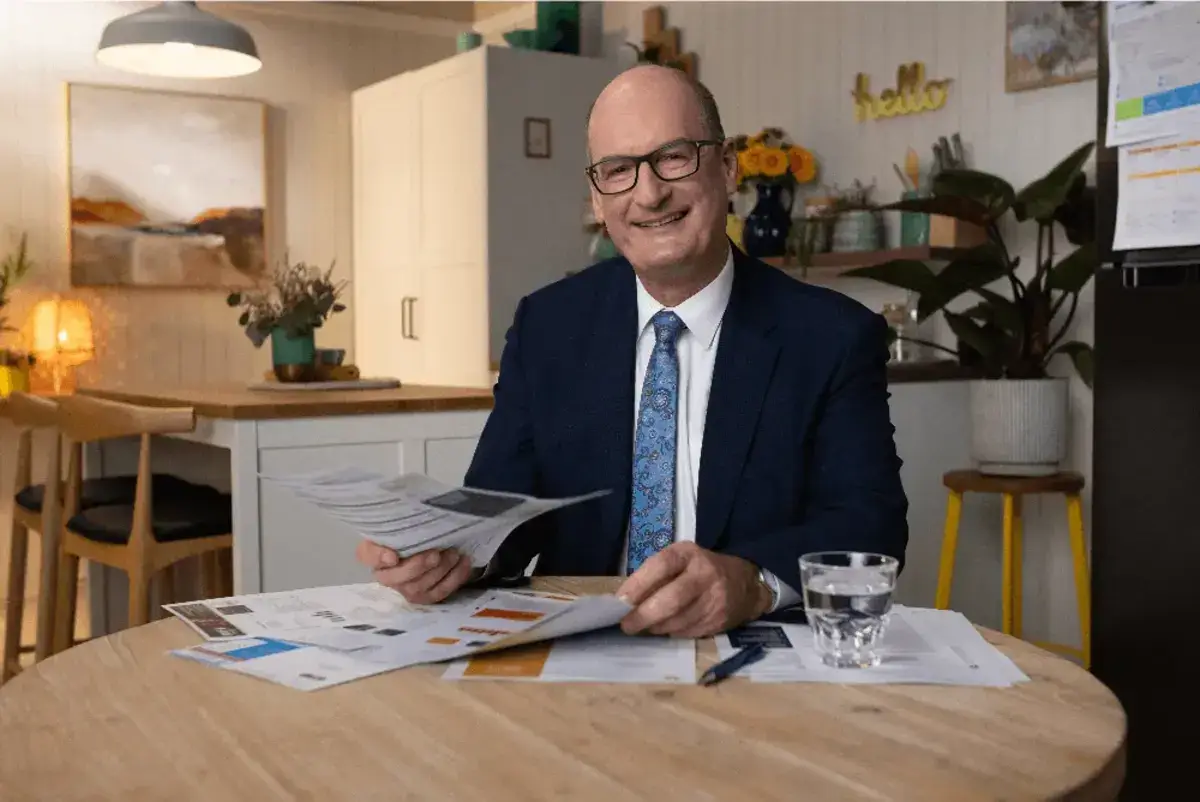
The following is David Koch’s personal views, as published in his ‘Your Money Digest’ newsletter.
Hi everyone,
Mark this Wednesday in your calendar. That’s the day the September quarter Consumer Price Index (CPI) will be released at 11.30am. That single figure will determine whether the Reserve Bank lifts interest rates or not at its next board meeting on Melbourne Cup Day.
The release of the Board minutes from the last RBA meeting indicate they have their finger on the trigger and they are more than ready to move.
The minutes said:
“The monthly CPI indicator suggested that progress in lowering services price inflation remained slow.”
“Some further tightening of policy may be required should inflation prove more persistent than expected.”
“The Board has a low tolerance for a slower return of inflation to target than currently expected.”
That last comment was a new one in the minutes and has markets on edge. It shows the RBA is not just wanting inflation to slow, they want it down at a faster rate.
They are concerned that rising property prices will make consumers feel rich and encourage them to go out and spend more, fuelling inflation.
The minutes noted rising home prices, “could support consumption by more than currently assumed” and, “the rise in housing prices could also be a signal that the current policy stance was not as restrictive as had been assumed”.
The RBA has for a while now been saying the inflation figure and the strength of the jobs market are its two main concerns. So Wednesday’s CPI is crucial because yesterday’s employment figures sent a mixed message.
There was a small increase in new jobs of 6,700 in September which was less than the 20-25,000 forecast by analysts. That figure, on its own, seemed to indicate that maybe the job market is softening.
But a surprise fall in the participation rate (proportion of the population in work) meant that the unemployment rate dipped from 3.7 per cent to 3.6 per cent… which by itself shows a strong job market.
Normally 37,000 new jobs need to be created each month to keep the unemployment rate steady on an unchanged participation rate.
What you need to know
Right now (pending Wednesday’s CPI data) the case to sit tight on rates remains pretty strong. The job market is showing signs of cooling and spending is down, so we may be spared another rate rise in November.
But we’re not out of the woods yet. The RBA won’t take the possibility of a rate rise off the table while inflation remains high.
There are also concerns about the rising cost of fuel, which not only impacts the cost of commuting but also the cost of delivering goods and essentials.
It’s really important that progress does not begin to backslide, but we don’t want to see the scales tip too much.
Any decision to raise interest rates should not be taken lightly, as major spending cuts and job losses could be very damaging to the economy.
Should you be worried?
Mortgagees are in a lot of pain with repayments increasing to 9.9 per cent of household disposable income in August. The RBA has reported that’s above the previous estimated historical peak.
Most households are treading water and should be able to keep their heads dry, but a big lift in unemployment could be catastrophic.
It’s not yet time to panic but it’s safest to prepare for all eventualities. Now is a good time to build up your rainy-day fund and search for savings in your everyday expenses. That’s the best defence against inflationary price hikes!
So what next?
If you’re coming off the fixed-rate cliff, it’s really important to shop around to avoid falling onto a rubbish rate.
Do some research, compare different loans, and see what you could be saving. Depending on your circumstances, the difference could save you thousands over the life of your loan.
Once you’re armed with some information, phone your lender and see if they can offer a discount. If the answer is ‘no’ be prepared to walk.
The story in numbers
Compare the Market analysis shows the difference between some advertised home loan rates was a whopping 0.79 per cent.
A person with an owner-occupier $750,000 loan could save $383 a month when they switch from a rate of 6.49 per cent to 5.70 per cent.
No end in sight for the rental crisis
A major ingredient in the current inflation figure is the crippling rise in rents. But the latest figures show it is going to get worse with a massive shortage of rental properties available.
According to SQM Research, the national residential property rental vacancy rate has continued to fall to just 1.1 per cent in September.
Most of capital cities recorded a decrease in vacancies, with Sydney, Melbourne and Canberra reporting decreases in rental vacancy rates during the month, standing at 1.3 per cent, 1.2 per cent and 1.8 per cent respectively.
After a recent reprieve, the rental vacancy rate in the Sydney CBD declined, falling to 3.9 per cent in September. Similarly, Melbourne CBD and Brisbane CBD saw decreases in their rental vacancy rates, which now stand at 5 per cent and 1.7 per cent, respectively.
In total, 77.6 per cent of all postcodes recorded a fall in rental vacancy rates over September.
The national median weekly asking rent for a combined dwelling is $594 a week and $684 in a capital city. For a capital city house it’s $792 a week, while the rent for a capital city unit is $590 a week.
The most expensive rent is Sydney houses at $996 a week and the most affordable rent is Adelaide units at $438 a week.
Over the last couple of months I’ve been telling you about to significant drop-off in building approvals which indicates that, down the track, not enough houses and units are being built to ease the shortage.
Of course, the process takes quite a while as after building approval from the local council you then have to build the property. So this current drop-off in building approvals will affect supply of properties in about two years’ time.
As this chart shows, there’s close to a record number of properties being built at this very moment… and there’s still a shortage. So just imagine how much worse it is going to be in two years.
Could granny flats help solve the rental crisis?
New analysis of all residential properties across Australia’s three largest capitals has identified more than 655,000 sites suitable for the construction of a granny flat, offering a solution to help ease the housing shortage.
Granny flats: Where are the greatest opportunities for development? by national town planning research platforms Archistar, real estate construction lender Blackfort and property data and analytics provider CoreLogic assessed every residential block across Sydney, Melbourne and Brisbane to determine how many individual properties have building potential for a self-contained two-bedroom unit.
Sydney is home to the most granny flat development opportunities with around 242,000 suitable properties — that’s 17.6 per cent of all housing blocks. Melbourne has almost 230,000 potential sites (13 per cent of blocks), while Brisbane has almost 185,000 suitable sites (23.3 per cent of blocks).
According to CoreLogic, forecasts show Australia will be 106,300 properties short over the next 5 years. For homeowners, the addition of a second self-contained dwelling provides an opportunity to provide rental housing or additional accommodation for family members, while at the same time, increasing the value of their property and potentially contributing additional rental income.
CoreLogic figures show an extra two bedrooms, and an additional bathroom could add around 32 per cent to the value of an existing dwelling. For a house worth $500,000, the addition of a granny flat has the potential to add approximately $160,000 to the value of the property.
When the tide goes out on a sea change it’s time to ride the wave
Remember during the pandemic when so many people moved out of the city for a so-called “sea change” to escape the lockdowns? Property prices in coastal towns went through the roof as they literally became hot property.
But now the pandemic is a bitter distant memory it seems a lot of Aussies are heading back to the cities and coastal property prices are being dumped.
According to Ray White Real Estate chief economist, Nerida Conisbee, interest in having a holiday home surged during the pandemic, but with rising interest rates and growing restrictions on short term rentals, this is a luxury that few can now afford. As a result, prices are declining in these areas, particularly in parts of the Sunshine Coast and coastal New South Wales.
It isn’t just the holiday house market affected. Lismore, North Lismore and South Kempsey experienced heavy flooding in February 2022. And while it has been over 18 months since the waters receded, it looks like those who were left with homes in a marketable condition had to walk away with potentially more than 40 per cent losses on sales, or over a $200,000 loss on their net wealth for the median sale.
While many holiday home towns and some select mining towns have seen declining prices, it isn’t consistent across the board. While some selected Sunshine Coast suburbs have seen declines in prices, across the region, prices are back where they were during the 2022 peak. In Western Australia, green energy minerals are pushing up values in places that have previously been very low in growth.







